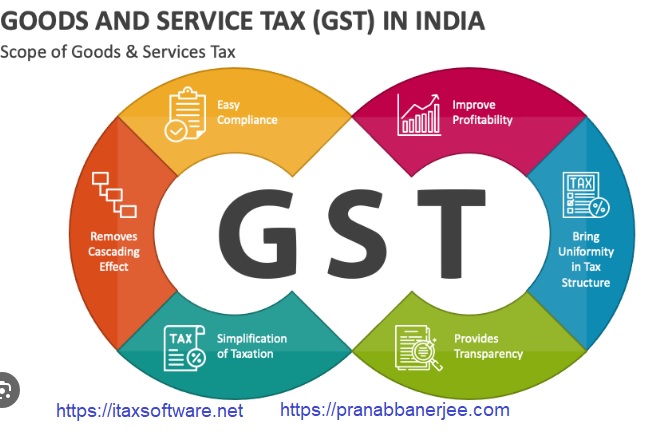Have you ever wondered how changes in GST impact your everyday shopping bill? From milk and medicines to footwear and household items, the GST Rate from 22nd Sept 2025 will touch almost every product you use daily. The Central Board of Indirect Taxes and Customs (CBIC) has issued Notification No. 9/2025, replacing the old tax structure. This revision, based on the 56th GST Council meeting chaired by Finance Minister Nirmala Sitharaman, simplifies rates, reduces costs on essentials, and ensures fairness in taxation.
To make things clearer, let’s break down the new GST system into easy-to-understand sections. Think of it like reorganising your wardrobe—grouping essentials, luxuries, and special items separately so you can access them without confusion.
Table of Contents
| Sr# | Headings |
| 1 | Understanding the GST Rate Change |
| 2 | Key Highlights of Notification No. 9/2025 |
| 3 | Why the Change from 22nd September 2025 Matters |
| 4 | GST on Essential Goods – Schedule I (2.5%) |
| 5 | GST on Processed and Industrial Goods – Schedule II (9%) |
| 6 | GST on Luxury and Sin Goods – Schedule III (20%) |
| 7 | Reduced GST on Essentials – Schedule IV (1.5%) |
| 8 | Ultra-Low GST on Precious Goods – Schedule V (0.125%) |
| 9 | Special Category Goods – Schedule VI (0.75%) |
| 10 | High GST Slab on Specific Items – Schedule VII (14%) |
| 11 | Important Clarifications You Should Know |
| 12 | How Farmers and Households Benefit |
| 13 | Impact on Small Businesses and Trade |
| 14 | Simplification and Ease of Compliance |
| 15 | Conclusion – What It Means for You |
1. Understanding the GST Rate Change
The government didn’t just tweak GST rates; it restructured them entirely. By replacing Notification No. 01/2017 with Notification No. 9/2025, effective from 22nd September 2025, the CBIC created a system that aligns with consumer needs, economic growth, and fairness.
2. Key Highlights of Notification No. 9/2025
- Issued on: 17th September 2025
- Effective from: 22nd September 2025
- Approved by: 56th GST Council meeting in New Delhi
- Objective: Relief for households, middle-class families, and small businesses, while ensuring better compliance.
3. Why the Change from 22nd September 2025 Matters
Imagine filling your grocery basket. A small shift in GST can change the final bill significantly. With the GST Rate from 22th Sept 2025, you’ll notice reduced prices on essentials, steady rates on processed goods, and higher taxation on luxury items. This balance ensures that daily needs remain affordable, while luxuries contribute more to the economy.
4. GST on Essential Goods – Schedule I (2.5%)
The government applied a 2.5% GST rate to items you can’t live without:
- Milk products
- Pulses, cereals, and jaggery
- Edible oils and dried fruits
- Medicines and diagnostic kits
- Affordable footwear and apparel
- Fertilisers, soaps, utensils, agarbatti, and agricultural machinery
This ensures that common households save money on day-to-day purchases.
5. GST on Processed and Industrial Goods – Schedule II (9%)
A 9% GST applies to goods like:
- Packaged foods
- Household cleaning products
- Industrial raw materials
This rate balances affordability with government revenue, supporting industries while not overburdening consumers.
6. GST on Luxury and Sin Goods – Schedule III (20%)
Luxury and harmful goods now attract a 20% GST. These include:
- Alcoholic beverages
- Cigarettes and tobacco products
- High-end cars and branded luxury goods
The logic is simple: let luxury consumers contribute more to the economy, while essentials remain cheaper for all.
7. Reduced GST on Essentials – Schedule IV (1.5%)
Some special essentials now enjoy a 1.5% GST rate. This extra relief supports lower-income families and ensures that the most necessary items stay affordable.
8. Ultra-Low GST on Precious Goods – Schedule V (0.125%)
Items like specific precious stones and metals attract a 0.125% GST, ensuring India’s jewellery and gem sector remains globally competitive while keeping prices within reach for consumers.
9. Special Category Goods – Schedule VI (0.75%)
A small 0.75% GST applies to selected special category goods. This slab protects businesses in niche sectors and avoids over-taxation.
10. High GST Slab on Specific Items – Schedule VII (14%)
Certain higher-taxed items now fall under the 14% GST rate. This mid-to-high range category balances government revenue and consumer spending power.
11. Important Clarifications You Should Know
- Unit container: Any pre-packed container (tin, box, bottle, etc.) with a fixed quantity.
- Pre-packaged and labelled goods: Retail packs under 25 kg or 25 litres that must follow the Legal Metrology Act, 2009.
- Definitions: Words like tariff item, heading, or chapter follow the Customs Tariff Act, 1975.
- Interpretative rules: Customs and GST laws apply uniformly.
12. How Farmers and Households Benefit
Farmers gain through lower rates on fertilisers, machinery, and daily essentials. Households, on the other hand, enjoy savings on groceries, medicines, and footwear. It’s like lifting a financial weight off the shoulders of the common man.
13. Impact on Small Businesses and Trade
Small traders often struggled with compliance and high tax rates. With this revision:
- Compliance becomes simpler
- Taxation aligns with business capacity
- Trade facilitation improves under GST
This move encourages entrepreneurship and growth.
14. Simplification and Ease of Compliance
By streamlining categories and clarifying definitions, the government reduces confusion. Businesses can now file returns more easily, while consumers understand exactly what they pay. Transparency builds trust in the GST system.
15. Conclusion – What It Means for You
In short, the GST Rate from 22nd Sept 2025 makes essentials more affordable, luxuries more expensive, and compliance easier. Think of it as fine-tuning an instrument—bringing harmony between affordability, revenue, and fairness. Whether you’re a farmer, student, homemaker, or entrepreneur, these changes will directly affect your daily life.
FAQs on GST Rate from 22nd Sept 2025
- What is the effective date of the revised GST rates?
The new GST rates apply from 22nd September 2025, as per Notification No. 9/2025. - Which goods will be cheapest under the new GST rate?
Essentials like milk, pulses, jaggery, medicines, footwear, and fertilisers will see the lowest tax at 2.5% or even lower in some slabs. - How will small businesses benefit from the new GST rates?
They’ll face lower compliance burdens, clearer tax structures, and fairer rate distribution, boosting their growth. - Why are luxury goods taxed at 20%?
Luxury goods are considered non-essential, so the government ensures those who can afford them contribute more to public revenue. - Does the notification affect gold and jewellery?
Yes, specified precious goods such as gems and metals fall under the ultra-low 0.125% GST rate, supporting the jewellery industry.





